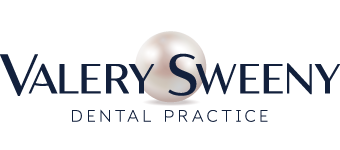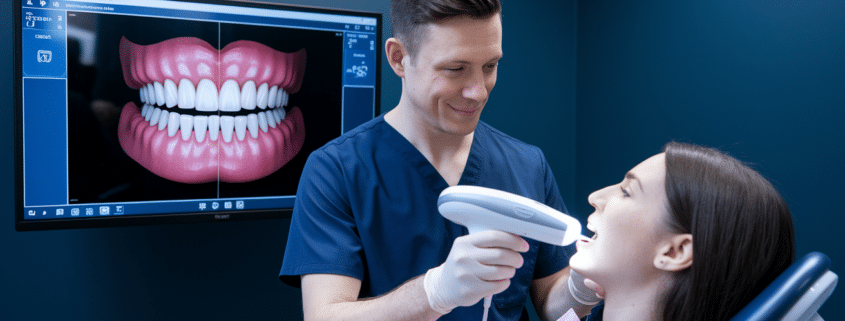How Intraoral Scanners Are Revolutionizing Dental Impressions
Let’s be honest—traditional dental impressions are the worst. Gag-inducing trays, goopy materials, and long wait times make them a universal patient pain point. Enter intraoral scanners: sleek, handheld devices that digitally capture your entire mouth in stunning 3D. They’re not just high-tech gadgets; they’re game-changers for both patients and providers.
At Valery Sweeny, DDS in Los Angeles, CA, intraoral scanners are part of a broader commitment to comfort, precision, and leading-edge care. And if you’re not already sold on the tech, keep reading—we’re laying out exactly how this innovation is reshaping modern dentistry.
TLDR – Quick Guide
- Intraoral scanners replace messy molds with digital precision
- They reduce appointment times and improve treatment outcomes
- Digital files are easy to store, share, and analyze
- They enhance patient comfort and experience
- Practices like Valery Sweeny, DDS use them to elevate standard care
Detailed Breakdown
What Are Intraoral Scanners?
Intraoral scanners are compact handheld devices that use optical and laser technology to scan a patient’s mouth. Within minutes, they produce a highly detailed 3D digital model of teeth and gums—no impression material, no mess, no drama.
Traditional Impressions vs. Digital Scanning
Let’s do a side-by-side:
- Comfort: Digital scans are fast and non-invasive; traditional methods require biting into a gooey tray.
- Accuracy: Scanners can detect tiny details missed by molds.
- Speed: Digital models are generated in minutes and can be shared with labs instantly.
- Reusability: Digital files can be reused, modified, and reprinted—unlike one-and-done impressions.
The shift isn’t just about convenience. A study published in the Journal of Prosthodontic Research found that digital impressions improve the fit of restorations significantly compared to conventional methods.
How Dentists Benefit
For dental practices, intraoral scanners streamline workflows and elevate care:
- Improved Diagnosis: 3D models help dentists like Dr. Valery Sweeny catch early signs of misalignment, wear, or decay.
- Better Communication: Visual aids improve patient understanding and trust.
- Workflow Integration: Scans feed directly into CAD/CAM systems, enabling faster turnaround for crowns, bridges, and aligners.
Why Patients Love Them
Let’s be real—no one walks into a dental office hoping to choke on impression putty. Intraoral scanners eliminate that entire anxiety loop. Patients experience:
- Less chair time
- Greater comfort
- Fewer remakes or adjustment appointments
- Immediate visual feedback about their oral health
Use Cases in Everyday Dentistry
At Valery Sweeny, DDS, intraoral scanning is used for:
- Creating custom aligners like Invisalign®
- Preparing crowns and bridges
- Planning dental implants
- Monitoring oral health changes over time
And since these digital files can be stored long-term, returning patients don’t need to re-do impressions unless there’s been a major change.
Key Takeaways
- Intraoral scanners are redefining how dental impressions are made—faster, more accurate, and way more comfortable.
- They eliminate the need for traditional molds, cutting down on time and error.
- Dentists benefit from more precise diagnostics and streamlined workflows.
- Patients enjoy a far better experience with no goopy trays or gagging.
- Valery Sweeny, DDS uses intraoral scanners to provide cutting-edge, patient-first dental care.
FAQs
1. What is an intraoral scanner?
An intraoral scanner is a digital device that captures 3D images of your teeth and gums. It replaces traditional dental molds with a faster, cleaner, and more comfortable digital scan.
2. Is an intraoral scan safe?
Yes. Intraoral scanners are completely safe and use non-invasive imaging technology. They don’t emit radiation and are safe for children and adults alike.
3. How long does an intraoral scan take?
The scanning process usually takes about 3 to 5 minutes. Most patients are surprised at how quick and easy it is.
4. Can I see my scan right away?
Absolutely. One of the best perks of intraoral scanning is that your dentist can show you the digital model of your mouth instantly, helping you understand your oral health in real-time.
5. Are digital impressions as accurate as traditional ones?
Actually, they’re more accurate. Studies show digital impressions reduce the likelihood of errors and often result in better-fitting dental restorations.




Leave a Reply
Want to join the discussion?Feel free to contribute!